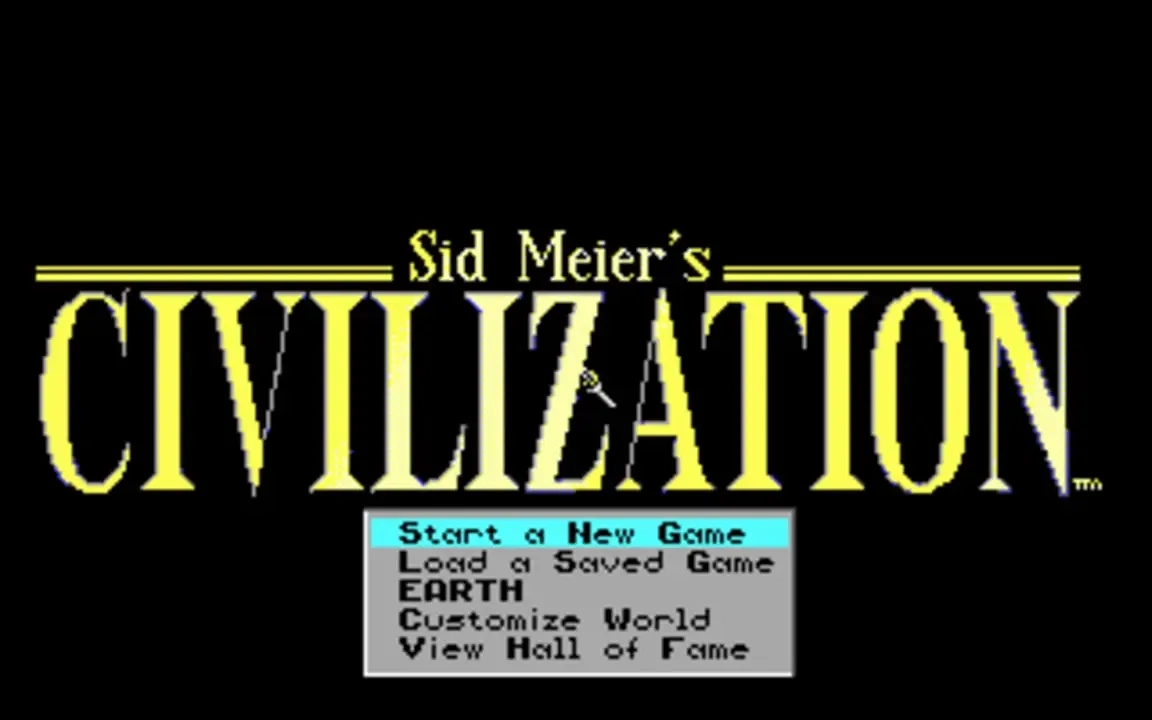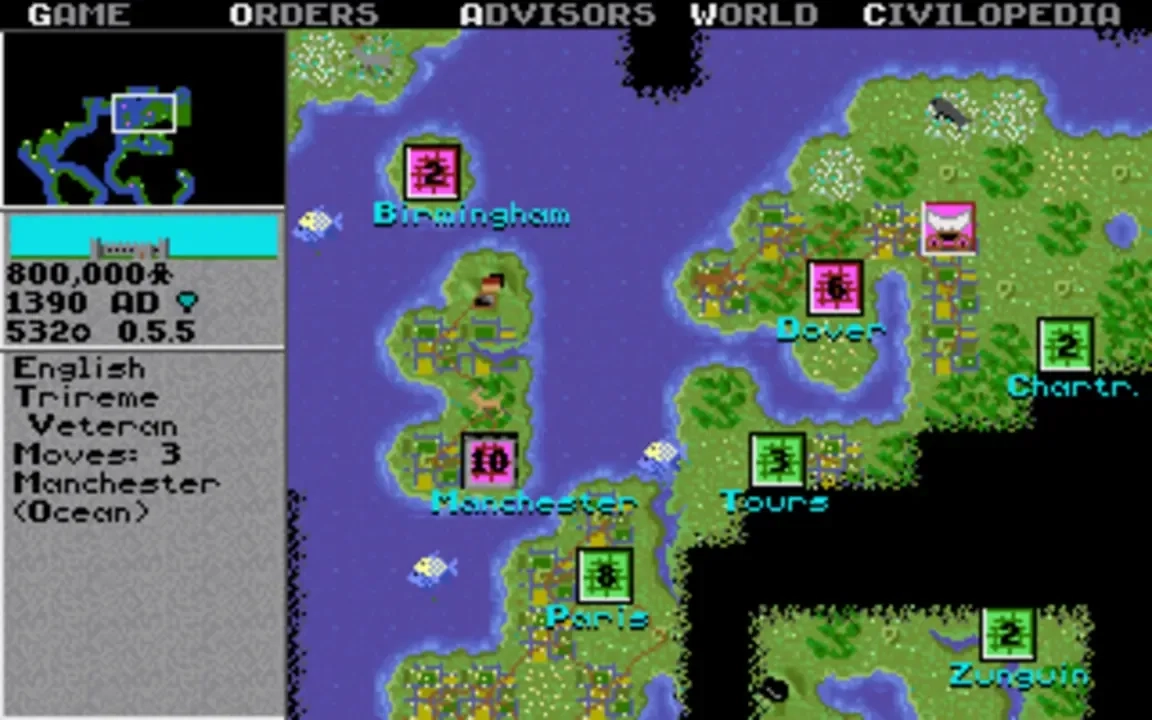🏛️ Sid Meier's Civilization – History, Trivia & Fun Facts
Published by RetroTrivia.Games — April 27, 2025
Released in 1991, Sid Meier’s Civilization changed strategy gaming forever. Instead of controlling a single battle or mission, players managed an entire civilization across thousands of years — from 4000 BC all the way into the near future. The goal was simple but ambitious: build an empire that would stand the test of time. Today, Civilization is seen as one of the most influential PC games ever made.
I remember playing Civilization back when it first came out. I was in my early twenties, living in my first apartment, and I had a big walk-in closet. I moved my PC into that closet and turned it into my gaming room. I spent many late nights in there, trying to take over the world — always saying, "just one more turn."

Brief History
Sid Meier's Civilization was developed by MicroProse, led by Sid Meier and Bruce Shelley. At the time, strategy games weren't sure bets for commercial success, and many people inside MicroProse were skeptical the project would work.
Originally, Civilization was prototyped as a real-time game, inspired by SimCity. Players would place zones to encourage their empire’s growth. But after lots of internal playtesting, Meier and Shelley decided to shift the game to turn-based gameplay — a move that proved critical to its success.
The game officially launched for MS-DOS in late 1991, later spreading to other systems like the Amiga, Atari ST, and Mac OS. It sold over 1.5 million copies, created a brand-new genre known as "4X" (Explore, Expand, Exploit, Exterminate), and paved the way for countless sequels and spin-offs.
Quick Facts:
- Developer: MicroProse (Sid Meier and Bruce Shelley)
- Genre: 4X Turn-Based Strategy
- Release Date: December 31, 1990 (some sources say 1991)
- Original Platforms: MS-DOS, Amiga, Atari ST, Mac OS

Trivia & Fun Facts
- Real-Time Origins: The first prototype was real-time, not turn-based.
- Sculpting with Clay: Sid Meier described designing Civilization like “sculpting with clay,” pulling ideas from Empire, SimCity, and Railroad Tycoon.
- Hidden Influence: The board game Civilization inspired the idea, but the video game is a completely different design.
- Team of Two: The core team was basically just Meier and Shelley, without heavy involvement from the rest of MicroProse.
- Cheating AI: The original AI sometimes cheated, giving itself secret information about the world map.
- Children’s Books: Developers used kids' history books to help create an approachable world history timeline.
- Hexes vs. Squares: Developers were hesitant to use hexes, sticking with a square-tile map instead.
- Civilization Swap: Early drafts included the Turks as a playable civilization, but they were swapped out for the Germans before release.
- Unfinished Rivals: Designers Danielle Bunten Berry and Don Daglow had plans for similar concepts years earlier, but never finished them.
How to Play Civilization Today
Sid Meier's Civilization (1991) isn’t officially available on Steam or GOG anymore. If you want to experience the original, the best option is to use a DOS emulator like DOSBox and find a legal copy through retro PC game collectors or abandonware archives.
If you're looking for a similar feel but an easier way to play, Civilization III Complete is still available on Steam and captures a lot of the classic magic with modern improvements.
Did You Know?
- Civilization's original real-time version was scrapped just months into development.
- Gandhi's nuclear aggression bug in later Civilization games became a running joke in the series.
- Sid Meier didn’t initially want his name attached to the title — the publisher added it for marketing reasons.
Retro Gamer Picks
Ready for More?
Love retro games and classic gaming history? 👉 Test your knowledge with the daily trivia challenge at RetroTrivia.Games!

